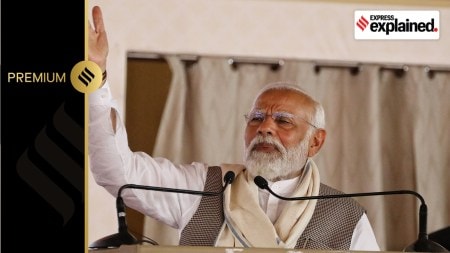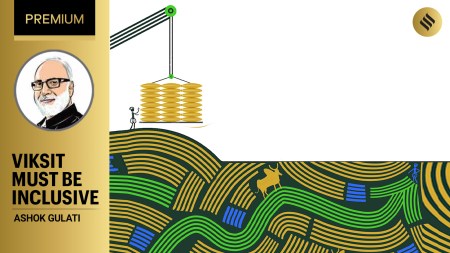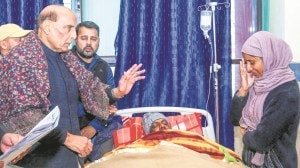- India
- International
How the 1857 revolt lit the spark for setting up Aligarh Muslim University
At its inception, AMU was a product of a concerted effort on the part of some of the most influential Muslims of that time to create a “Muslim” university. Sir Syed Ahmad Khan had led the path after having witnessed closely the misery of the Muslim community in the aftermath of the revolt of 1857.
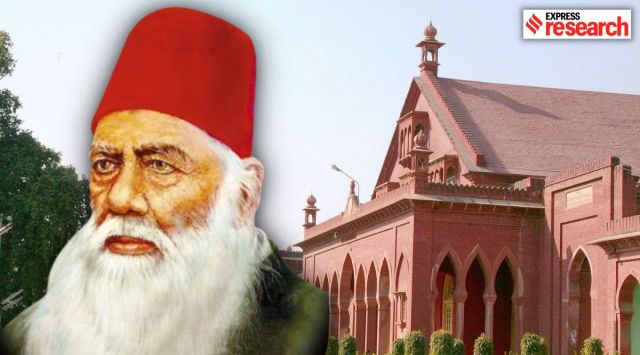 Sir Syed Ahmad Khan set up Madrasatul Uloom Musalmanan-e-Hind in 1875, which later became Aligarh Muslim University in 1920. (Wikimedia Commons)
Sir Syed Ahmad Khan set up Madrasatul Uloom Musalmanan-e-Hind in 1875, which later became Aligarh Muslim University in 1920. (Wikimedia Commons)The Supreme Court on February 1 concluded the hearings in the case to decide if Aligarh Muslim University (AMU) can claim minority status under Article 30 of the Constitution. The case, which has been in courts for decades now, shines a spotlight on what’s one of the premier universities in the country.
At its inception, AMU was a product of a concerted effort on the part of some of the most influential Muslims of that time to create a “Muslim” university. Sir Syed Ahmad Khan, who led the path in the 1860s, had witnessed the 1857 revolt from close quarters and saw the kind of misery it brought to Indians, especially the Muslims whom the British blamed for the uprising. Following the revolt, his uncle and cousin were killed and their house in Delhi looted. His mother is known to have starved while hiding in a stable near their house. “…in the aftermath of the revolt and its repercussions, the Muslim community too had boycotted the English rulers, their education and reforms. So within a decade or so, the Muslim community was declining as far as its fortunes were concerned,” said Prof Ali Nadeem Rezavi of AMU’s Department of History.
It was during this time that Sir Syed, employed by the East India Company as a sub judge in a Banaras court, visited England. As he toured the country, attending seminars and dinners, and visiting the campuses of Oxford, Cambridge, Harrow and Eton, he was convinced that Western style of education, rooted in scientific temperament, had propelled the West to the path of progress. He also felt strongly that it was the lack of similar education that had left Indians, particularly the Muslims, in the dark. While still on the trip, he discussed with his son, Syed Mahmood, the idea of building a college in India that would take the best from the Western style of education. Sir Syed wanted this institution to be the “Oxbridge of the East”. “His idea was to show that the Quran and the Crown could go together in education,” said Rezavi.
For the next few years, Sir Syed wrote extensively to rally support for building the college of his dreams. As Mohammad Wajihuddin has written in his book on AMU, Sir Syed “stirred the stagnant waters of the Muslim community”. Salman Khurshid, in his book, described it as a “renaissance moment for post-medieval Muslims in India”. Finally, on May 24, 1875, the Madrasatul Uloom Musalmanan-e-Hind was inaugurated with seven teachers and the Oxford-educated HGI Siddons as its headmaster. Two years later, the school turned into the Mohammedan Anglo-Oriental College.
By the 1890s, however, the fortunes of the college started to dwindle. By the time of Sir Syed’s death in 1898, the number of students enrolled had dropped to 189 from 595 in 1895. Soon, the college’s board of management decided that it was necessary to elevate it to the stature of a university. What ensued was a movement, which, scholars say, was as political as it was educational. “The Muslim university movement was nothing less than an effort to create an all-India Muslim constituency and to carve out for it a decisive piece of political power,” wrote historians Gail Minault and David Lelyveld in their article, ‘The Campaign for a Muslim University, 1898-1920’ (1974).

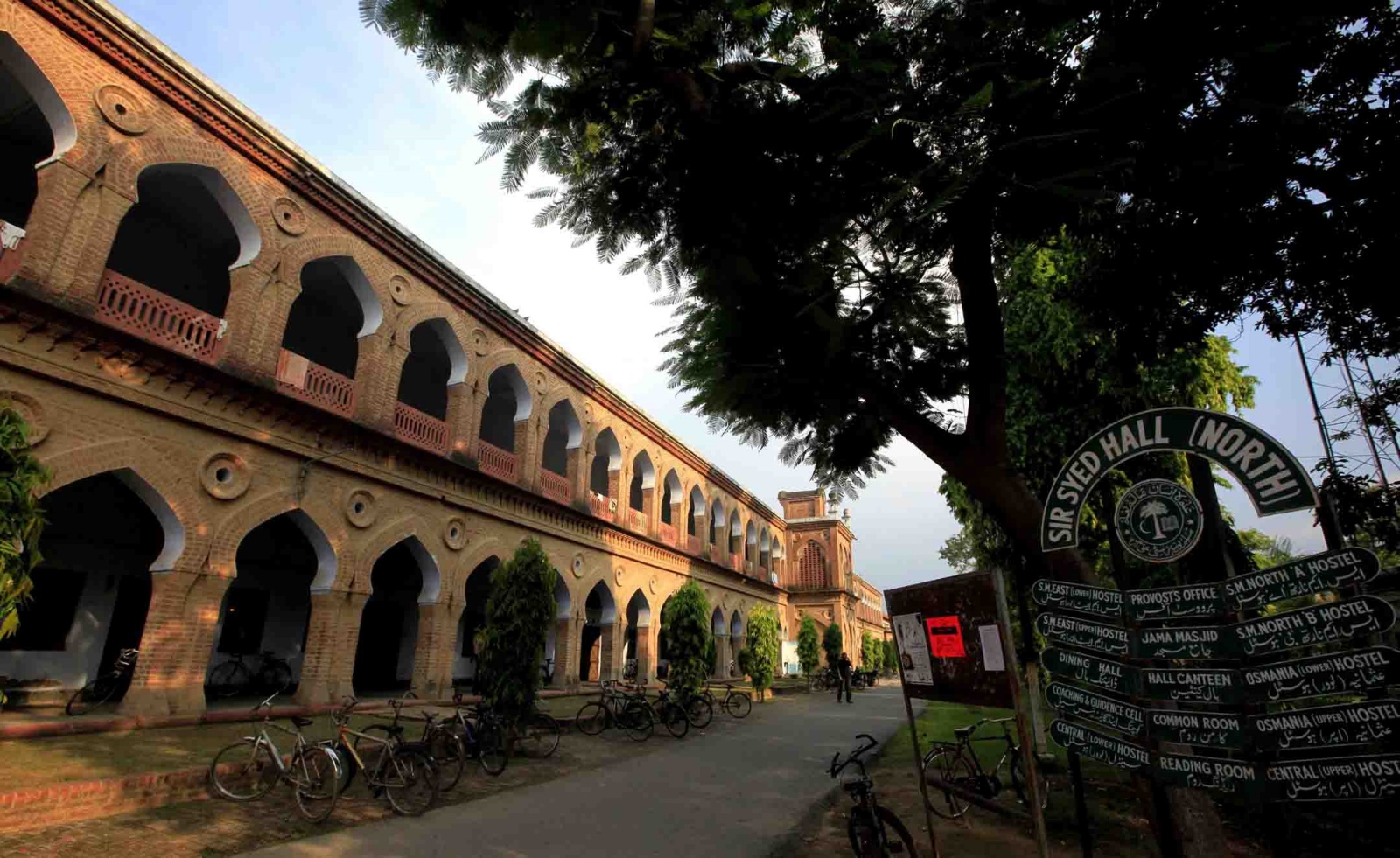 Aligarh Muslim University (AMU) (Express photo by Amit Mehra)
Aligarh Muslim University (AMU) (Express photo by Amit Mehra)
Mohsin-ul-Mulk, a close aide of Sir Syed who later became one of the founders of the All India Muslim League, started touring major Indian cities to gather subscribers for the cause of a Muslim university. Influential Muslims like the Aga Khan, Justice Badruddin Tyabji and Justice Amir Ali were roped in to help provide steam to the movement.
Wajihuddin, in his book, noted that in 1906, “(the) Aga Khan led a deputation of thirty-five leading Muslims to Viceroy Lord Minto in Shimla. Apart from asking for permission for Muslim representatives elected by Muslim votes in elected bodies, the delegation also demanded a Muslim university”.
By 1910, the Aga Khan issued a “now or never appeal” and threw himself into the campaign in a way that surpassed all his efforts before. Along with Shaukat Ali, known for his role in the Khilafat Movement, he travelled across India to collect funds for the university. Their campaign was rigorously reported by the Urdu press for the dramatic effect it had. They travelled in a special railway carriage and gave fiery speeches on the necessity of a Muslim university that would affiliate colleges on the Aligarh model from all over India. Muslims from other parts of the country were now motivated to donate. By August 1911, nearly Rs 25 lakh had been pledged and Rs 4 lakh collected.
Following their lead, the Raja of Mahmudabad in the United Provinces decided to hire a train and run a similar campaign through Punjab and Sind.
It is important to note that by this time, Muslim politics in India was also shaping up steadily. The Muslim League, the Ottoman Sultan’s Pan-Islamism movement, World War-I, the Mont-Ford reforms and the Khilafat movement provided the public contexts for events that led up to the Muslim university campaign.
By 1911, a draft constitution of the proposed university was submitted to Harcourt Butler, who was the education member in the viceroy’s council. As per the draft, the main governing body of the university would be the court of trustees composed entirely of Muslims who would elect a 25-member executive council for three-year terms.
While the British accepted the proposal, they also put the condition that the proposed university would be under greater government control. Further, the British also did not consent to the idea of having other Muslim institutions affiliated to AMU.
The leaders of the Aligarh Movement agreed to the British government’s terms, although seeds of discontent were sown among some of them, namely brothers Shaukat and Mohammad Ali. They went on to establish another university — Jamia Millia Islamia — to counter government control. Jamia took birth along with AMU in Aligarh in 1920 and shifted to Delhi five years later.
Apr 05: Latest News
- 01
- 02
- 03
- 04
- 05




